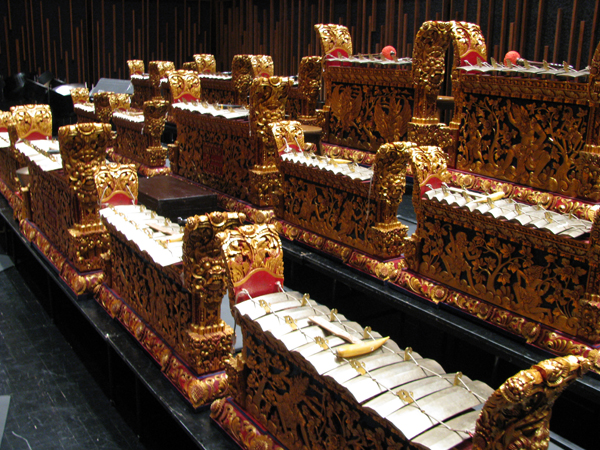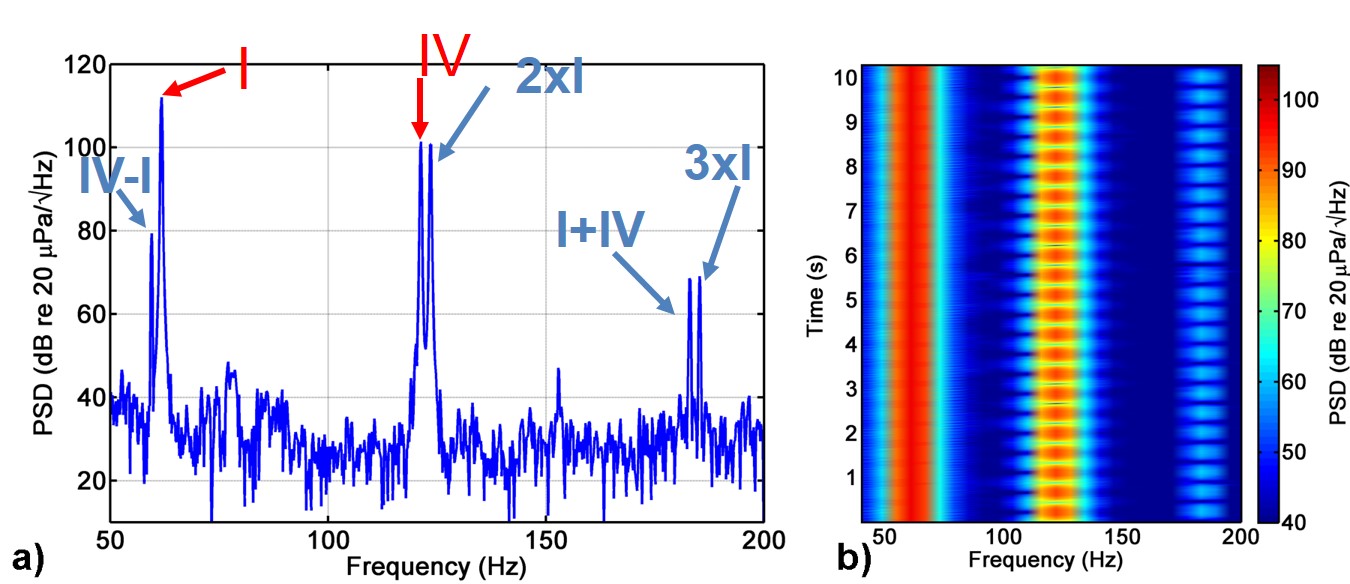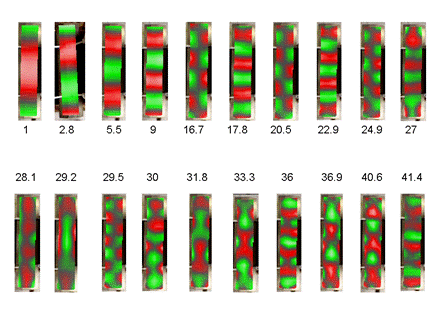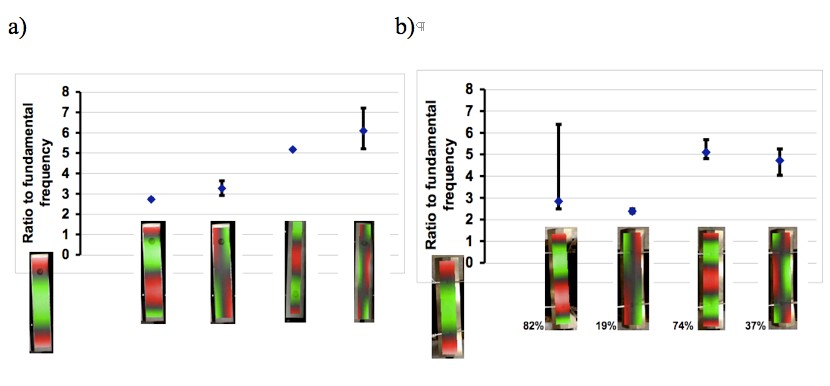Acoustics of the Balinese Gamelan

The rich culture of the people of Bali is manifest in their percussion ensembles known as gamelan, both in the ornately carved instruments and in their sound. One distinguishing characteristic of Balinese gamelan music is referred to as ombak, meaning "wave". Ombak describes the shimmering quality of the music that results from acoustic beating.
Thanks to Dr. Jeremy Grimshaw, BYU is home to a gamelan semara dana, which is a relatively new type of ensemble that allows Gamelan Bintang Wahyu to play music from different gamelan genres. Dr. Grimshaw contacted Dr. Gee about studying the acoustics of these unique instruments and two different undergraduate projects resulted. One was to study the cause of the ombak in the large gongs that are struck at the end of musical passages. The second was to study consistency of mode shapes and natural frequencies across different metallophones.
The Ombak and the Gong
The large bronze gongs in a gamelan are relatively deep and are tuned to a specific pitch. During the forging process, they are cold hammered until the desired sound is achieved. The below photo shows the gong ageng wadon and the first nine mode shapes that were obtained using a scanning laser Doppler vibrometer. The red and green represent parts of the gong moving out of phase from each other. While some of the modes are what one would expect from a circular gong (I-IV,IX), there are others that appear more peculiar.

Although these unique mode shapes that appear to be specifically hammered into the gong are responsible for some of the acoustic beating, there are other modes that only appear when the gong is struck. These modes appear because of nonlinearity - harmonic and intermodulation distortion that cause harmonics and sum/difference frequencies to appear. To study this, we vibrated the back of the boss (the polished bronze raised dome at the center) at modes I and IV and were able to recreate all the extra modes. Their close frequency spacing and similar amplitudes causes strong beating and different frequency ranges. It is the nonlinear response of the gong that is critical to its sound. For more information, see our publication in Journal of the Acoustical Society of America or the write-up in Physics Today.


Of Modes and Metallophones

The bronze bars on the metallophones in a gamelan are curved, with a trapezoidal cross section. Yet for many years, they were believed to have the same natural frequency ratios (ratios of partials to the fundamental) as the glockenspiel, which has rectangular bars. We used our scanning laser vibrometer to study the different mode shapes and their consistency across the various bars on each instrument. The figure to the right shows many of the mode shapes on one bar and their relative frequency ratios. Below, the figure at the left shows mode shapes of the glockenspiel and the range of frequency ratios for the different bars. The error bars are relatively small, indicating the uniformity of the rectangular bars. On the other hand, although the same mode shapes appear on the gamelan bars, the frequency ratios are different, with much more variability, and not all modes appear on each bar. (The percentage of occurrence is also given.) This result helps illustrate the uniqueness of a Balinese gamelan. For more information, see our publication in the Journal of the Acoustical Society of America.
